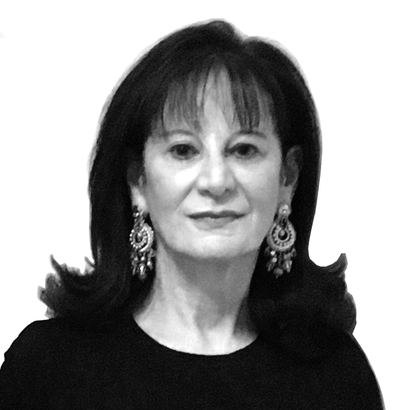Had Jay Gatsby gunned his yellow Rolls-Royce between Manhattan and Long Island’s North Shore a few decades later, he might, in essence, have crossed paths with a young Guy Trebay.
Like Gatsby, Trebay’s family occupied a sprawling mansion. They drove a series of luxury-model cars. Like Gatsby, Trebay’s tall, handsome father made a fortune befitting his era, with a cheesy men’s cologne called Hawaiian Surf that, the future writer started to notice, involved sales trips with a pretty secretary in tow. While Trebay and his siblings made like rich little hippies—drugs, beach bonfires, and petty theft—their parents partied hard and lived perilously, the Pall Malls that would eventually kill his glamorous, daredevil mother never far from her side.
As with Gatsby, “good looks were so important in their lives,” writes Trebay in Do Something: Coming of Age Amid the Glitter and Doom of ’70s New York, his new memoir, “and referred to so often I mistook them for a value.” Like Gatsby’s invented past and manically gilded present, those appearances mostly depended on overactive fabrication. Their shattering was spectacular: Trebay’s mother dead within a year, his sister a fugitive from justice, their pile of a house in smoldering ruins.

Trebay promptly foreshadowed the influential position he’s held in the Styles and Culture sections of The New York Times for two decades by foregoing a high-school diploma, heading for his equivalent of Daisy Buchanan’s green dock light, the seductive mid-70s glow of a New York City teetering on the economic brink.
The F. Scott Fitzgerald analogies he would consider a bunch of hooey. Instead, the writing he mostly came to emulate he found on his breaks as an illustrators’ model prowling Fourth Avenue’s Book Row, or shoplifting books at Macy’s (when Macy’s sold books). Edmund Wilson and Gore Vidal, the brothers Goncourt, Christopher Isherwood, the two Bowleses, McCandlish Phillips, Gay Talese, helped him toward the unblinking, darkness-parting, undercurrent-riding, minutely observant sensibility at work in this memoir, and the skepticism he has wielded, willowy, bespectacled, blazer crisply tailored, from the style world’s front rows.
Trebay also wrote eccentric playlets populated with fancily named characters, like the one his friend Elaine Potter Richardson took as her nom de typewriter, Jamaica Kincaid. His nostalgia, at 71, is in the details. He admits to his ambition and to the ease he developed “at investing myself occupationally in the feelings of others.” His personal life and emotional entanglements the memoir keeps—that blazer again—under wraps.
The passion he reveals is for the crumbling city that welcomed him into its gay demimonde, its downtown art world, its alternative journalism, and its indulgence for re-invention.
With his friend Paula Hyman, he moved to a cheap apartment in the unfashionable north Bronx, moonlighting as a busboy at Max’s Kansas City while they sewed fringed shoulder bags that caught on with the likes of Ali MacGraw. The friendships he cultivated with the likes of Horst P. Horst and Charles James attest to his networking skills, and his access to gossip about such figures as an eminent art historian—O.K., John Richardson—with “a secret sex dungeon in Philadelphia” (Philadelphia!).
Rumors about the epidemic of the following decade lay beyond the horizon, the vogue-ball drag queens and trailblazing trans stars Trebay admired still able to walk a double edge. How much those plague years broke his heart is measured by the acid levels in his tone: “All those AIDS deaths were a great convenience to developers; each time death served its inexorable sentence … another unit of housing returned to the open-market rent rolls.”

He landed his first paid writing assignments with Andy Warhol’s fledgling Interview, but no spot, he emphasizes, in the inner circle. Instead his “affinity … for kooks and oddballs, marginal characters and curious folkways” pointed him toward The Village Voice and a fiefdom of arts listings he farmed out to all-star-bylines-in-waiting: James Wolcott, Colson Whitehead, C. Carr, Luc (not yet Lucy) Sante, Hilton Als, Roz Chast, Robert Mapplethorpe.
But even getting his own column couldn’t buffer Trebay against the perpetual sense of loss the 80s brought with them. His escapes were the conflict zones, from Crown Heights to the Cambodian killing fields and Romania’s blood-soaked revolt against the brutal Ceaușescu regime, that he and Sylvia Plachy, the paper’s staff photographer, took to covering together. As far as fashion statements go, few quite compared with the sight of Elena Ceaușescu, caught on videotape, hastily fastening her fur collar before facing a firing squad.
Unlike a fashion runway, little is linear about Trebay’s memory chronicle, an offhandedly deliberate exercise in intellectual maze building, with truth-seeking at its core. Suddenly, midway through the book, he’s seven, his vast backdrop the baroquely modernist Parkchester apartment suburb erected by Metropolitan Life Insurance for an upwardly mobile, whites-only working class that had stepped up a social notch and into the Cold War.
Landscaped with meandering greenery, it’s also haunted by the specter of the “Mad Bomber,” whose campaign against Con Edison sprouted “wanted” posters at the local post office. It was reached, Trebay vividly recalls for us, through the same “oak double doors” he’ll one day push through to check for F.B.I. flyers broadcasting the armed robbery committed by his sister Laura.
Young ladies in Fitzgerald novels don’t behave that way. But Do Something’s assessment of reality is at least as absorbing as fiction.
Celia McGee, a New York–based arts-and-culture reporter, writes regularly about books for AIR MAIL, The New York Times, and other publications


